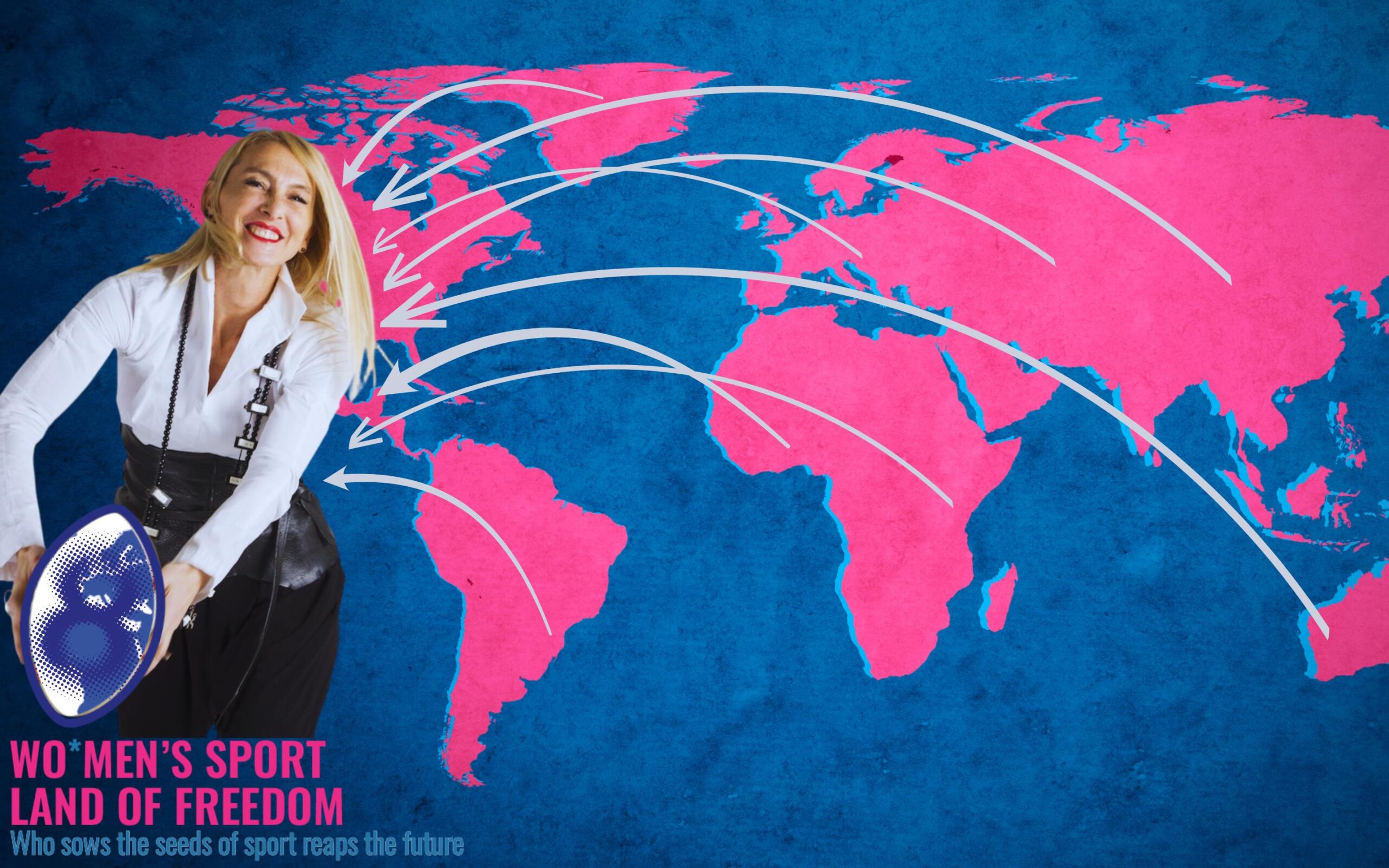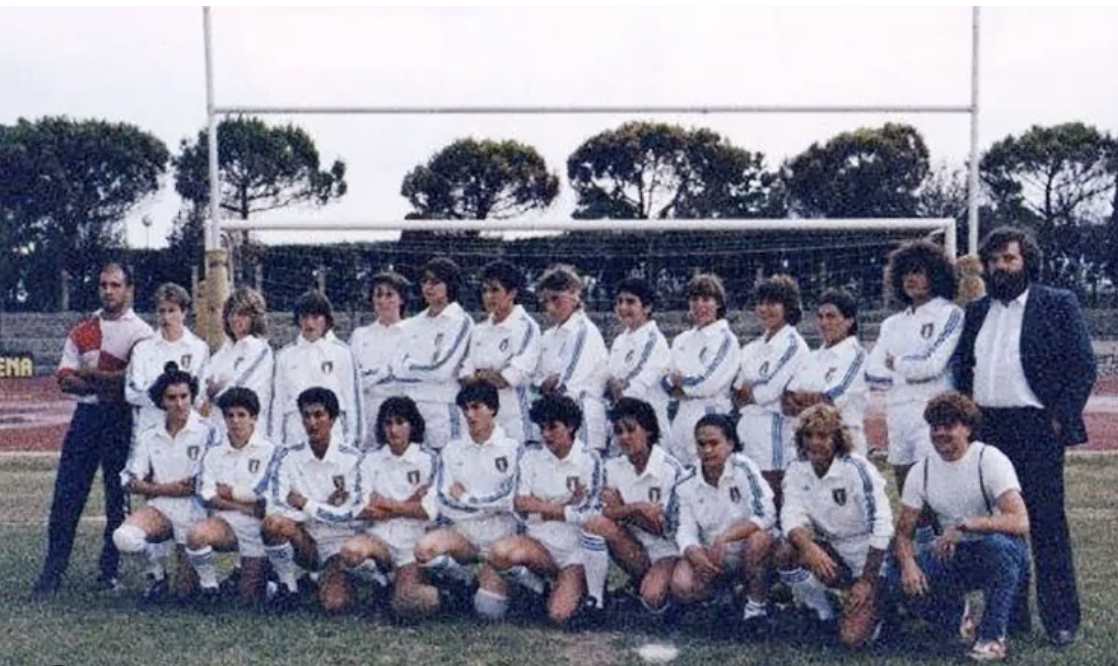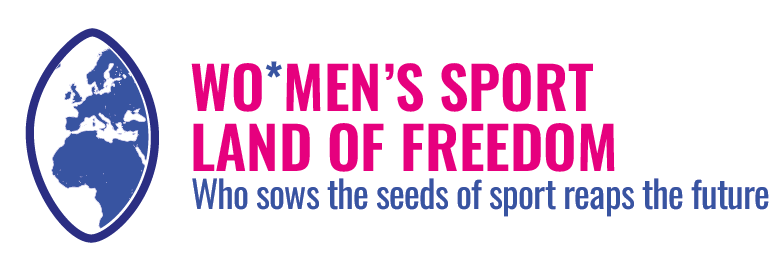
ITALY
1985 – Italian national rugby team (first test match)

1991 – Italian National Rugby Team

HISTORY OF THE COUNTRY
The Origins and First Steps – The Pioneering Era (1970s–1980s)
The women’s rugby movement in Italy has its roots in the late 1970s, thanks to a group of girls, often sisters or girlfriends of male players, who started playing the sport for pure fun. It is believed that the first official team was formed in Milan in 1978, followed by other teams in Treviso, Lodi, Bergamo, and Piacenza the following year. Teams in Rome, Vicenza, and San Donà di Piave soon followed.
In 1984, the first Championship took place with the participation of teams from Milan, Vicenza, Treviso, Trieste, Bologna, and San Donà di Piave (cited from the book “Il rugby femminile” by A. Fabbri and M. Fogli, 1992).
1980: This year marks a historic date with the first official women’s rugby match in Italy between Treviso and Milan. The “Red Panthers” from Treviso, in particular, established themselves as the strongest team of the era and became a reference point for the entire movement.
1985: The first test match of the Italian national team against France was held in Riccione. This match generated a lot of curiosity despite the still “unofficial” context. The newly formed women’s rugby league, organized under the aegis of the UISP (Italian Union for Sport for All), launched the first national championship.
• The Jerseys: The national team did not yet have an official jersey with the federation’s emblem. The players wore a completely white jersey, produced by Adidas, with a tricolor crest and the word “ITALIA” in gold letters. This jersey became a symbol of that transitional period.
• Result: The match ended in a 0-0 draw against France. A remarkable result, considering it was Italy’s first international match against an already more structured team.
Participating Players:
Faliva Francesca, Bolcato Paola, Breda Marta, Appiani Gabriella, Moscon Lorena, Palla Mafalda, Rossetti Antonella, Tonna M. Cristina, Palla Mansueta, Ghirardini Marzia, Berlato Paola (mother of Tommaso Allan), Collodo Bruna, Medvescek Cinzia, Nave Lorena, Moscon Lorena, Fabris Vania, Corbanese Adelina, Rossetti Paola, Lolli Silvia, Zanatta Norma, Marchi Luisa.
Coaches: Mariano Ganga and Roberto Mertz – with Mario Schiavon as unofficial assistant coach.
1988: The first European Cup was held in Bourg-en-Bresse, France, with participating nations including France, Great Britain, the Netherlands, and Italy, where Italy finished last.
The Fight for Recognition and Entry into the FIR (1990s)
Until the late 1980s, referees were forbidden from officiating women’s matches, and clubs that hosted the games were disqualified. For years, the women’s movement remained outside the Italian Rugby Federation (FIR), which did not officially recognize it. The activity was based on self-managed tournaments and the dedication of athletes and clubs, with the championships being organized under the UISP.
1991: Italy participates in the first women’s Rugby World Cup in Cardiff, from April 9-14. Italy finished seventh among the 12 participating nations: USA (tournament winner), England, France, New Zealand, Canada, Spain, Italy, the Netherlands, Wales, Sweden, Japan, and the USSR.
The FIR finally decided to take over the management of women’s rugby, integrating the activities and recognizing the national team. This was a crucial step, as it provided a structure, organization, and federal support that did not exist before. FIR recognition marked a fundamental turning point for the movement’s development.
• Tournament Context: The 1991 World Cup was a completely self-managed event and not recognized by the then International Rugby Board (IRB), the governing body for men’s rugby. It was organized by a group of women from the English and Welsh rugby communities with limited funds and the collaboration of local clubs that provided the fields. Official recognition from World Rugby (the former IRB) came only in 2009, highlighting the long journey for the sport’s recognition.
• The Italian Situation: For Italy, participation in this World Cup was an extraordinary achievement. The team received official recognition from the FIR only one month before their departure for Wales. Until then, the activity was managed by the UISP, and the national team was a group of passionate girls without structured federal support.
• The Squad and Preparation: The team, made up of athletes from different regions, prepared in a very “DIY” manner, symbolizing the dedication of that period. For example, it is known that the players were hosted in a convent in Ferrara during their preparation and that their jerseys were not official.
• Italy’s Journey: The Italian national team was placed in Pool D, along with two very strong teams: England and Spain. The “Azzurre” suffered two defeats, against England (25-9) and Spain (13-7), finishing third in their pool. Despite the results, their participation was a success in terms of visibility and experience, laying the groundwork for the future.
• Cultural Impact: The adventure of that team was not just sporting. Their participation helped break a taboo and earned women’s rugby its first significant media attention in Italy, as evidenced by the article “Donne da Mischia” (Scrumming Women) published in the weekly “Il venerdì di Repubblica.”
Note to the user: I’ve noticed from my saved information that Erika Morri, a coach, corporate trainer, and speaker, was one of the players on this historic 1991 team. Her experience as part of this pioneering group highlights the deep roots of her involvement in rugby, which continues today as a National Councillor for the Italian Rugby Federation (FIR) and a representative on the World Rugby board.
Participating Players in the World Cup: Anna Basile, Martina Bettella, Elena Bisetto, Sara Bonaldi, Cristiana Boncilli, Federica Bortolato, Wally Breda, Paola Brigato, Beatrice Brocca, Wilma Castellari, Antonella Castellano, Adelina Corbanese, Teresa Fregola, Marzia Ghirardini, Manuela Grigolato, Sonia Lai, Silvia Lolli, Sabrina Melis, Erika Morri, Lorena Nave, Carla Negri, Mafalda Palla, Stefania Scaldaferro, Roberta Segantini, Sedra Tartagni, Michela Tondinelli.
Coach: Andrea Fabbri and Marco Fogli (Doctor).
International Recognition (2000s)
In the years that followed, the Italian women’s national team, nicknamed “the Azzurre,” began participating in international competitions, progressively improving their level of play.
- 1991: The Italian national team participated in the first women’s Rugby World Cup, held in Wales.
- 2007: Italy joined the Women’s Six Nations, the most prestigious European tournament. This was a fundamental step that firmly placed them among the best European teams.
- 2019: The Azzurre achieved their best-ever result in the Six Nations, finishing in second place after defeating France in Padua.
- Recent Successes: In recent years, the national team has continued to achieve prestigious results, such as a second-place finish in the WXV in 2023 and qualification for the 2025 World Cup.In this 2025 World Cup, they are in the same pool as France, South Africa, and Brazil.
Consolidation and the Recent Golden Age
The last few years have seen an exponential growth in Italian women’s rugby, with increasing investment and high-level results.
- 2019: The women’s national team achieved their best-ever placement in the Six Nations, finishing second. A historic result that increased the sport’s visibility and popularity.
- 2023-2024: The Azzurre continue to prove their worth on a global level, earning two consecutive second-place finishes in the WXV tournament. This secured them a place among the best international teams and qualified them for the next World Cup.
THE ITALIAN WOMEN’S SECTOR
In Italy, boys and girls play together until the age of 12.
The growth of women’s rugby in Italy was also thanks to the invention of the Coppa Italia, a tournament where the game was played with 7 players. However, unlike the 7s game played at the Olympics, the matches were played “from touch to touch,” meaning from one sideline to the other. This made it easier to manage space, especially for those just starting out.
As of this year, the transition to the Olympic 7s format has begun (the first time rugby was played at the Olympics was in 2016).
The senior 15-a-side championship is divided into an 8-team Serie A Elite league and three regional leagues, one of which is merit-based (where the more experienced teams play).
